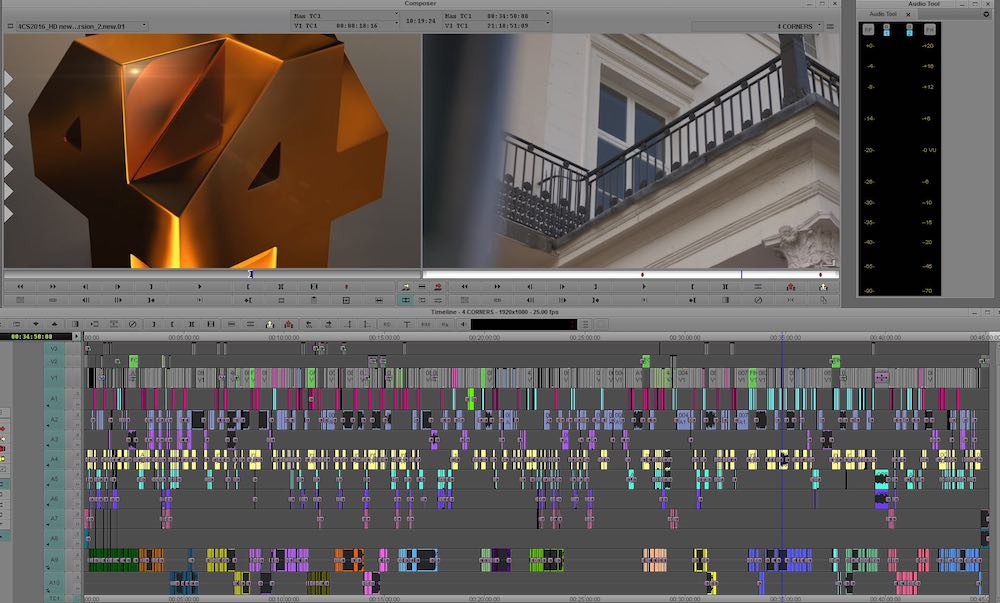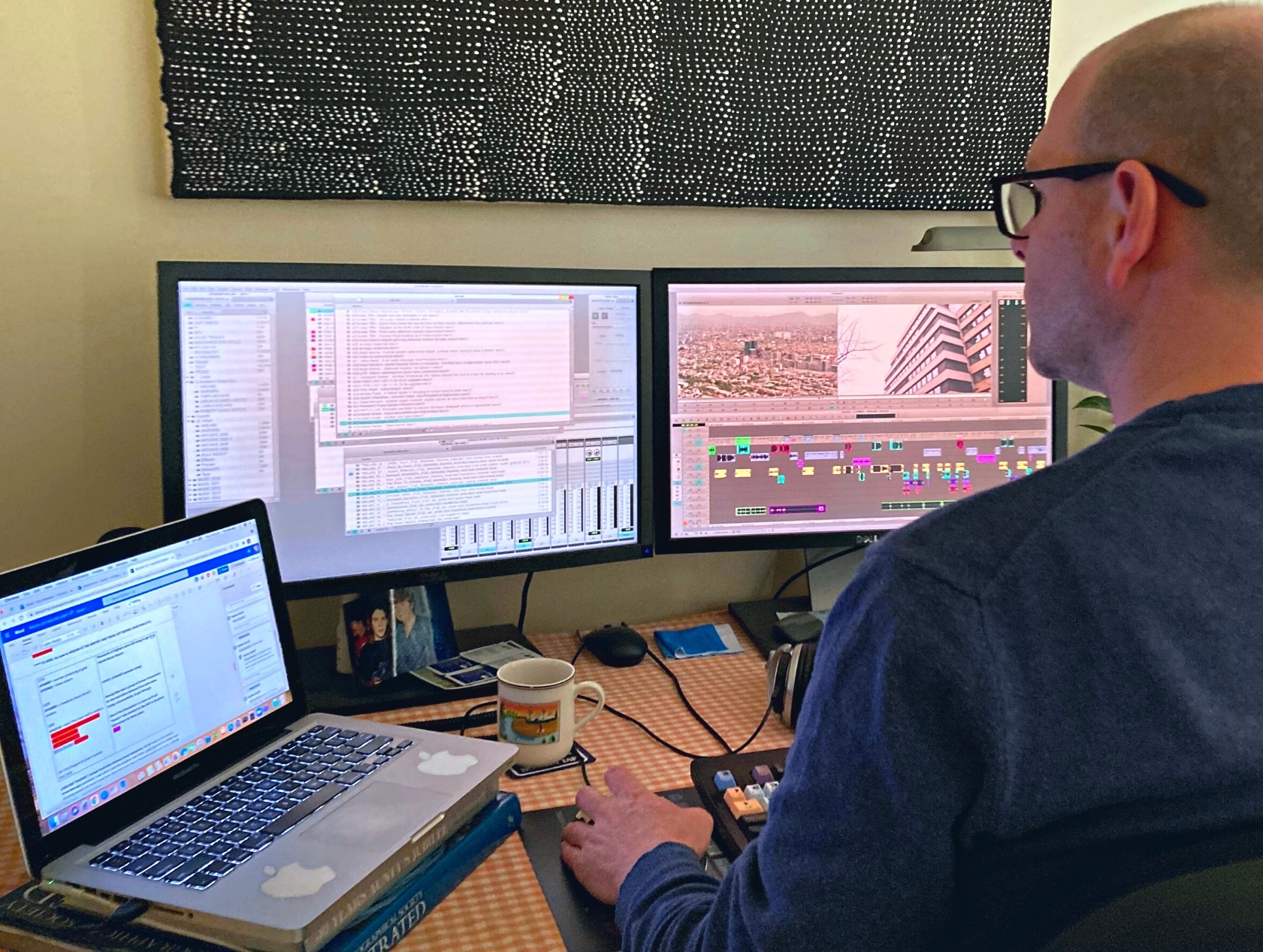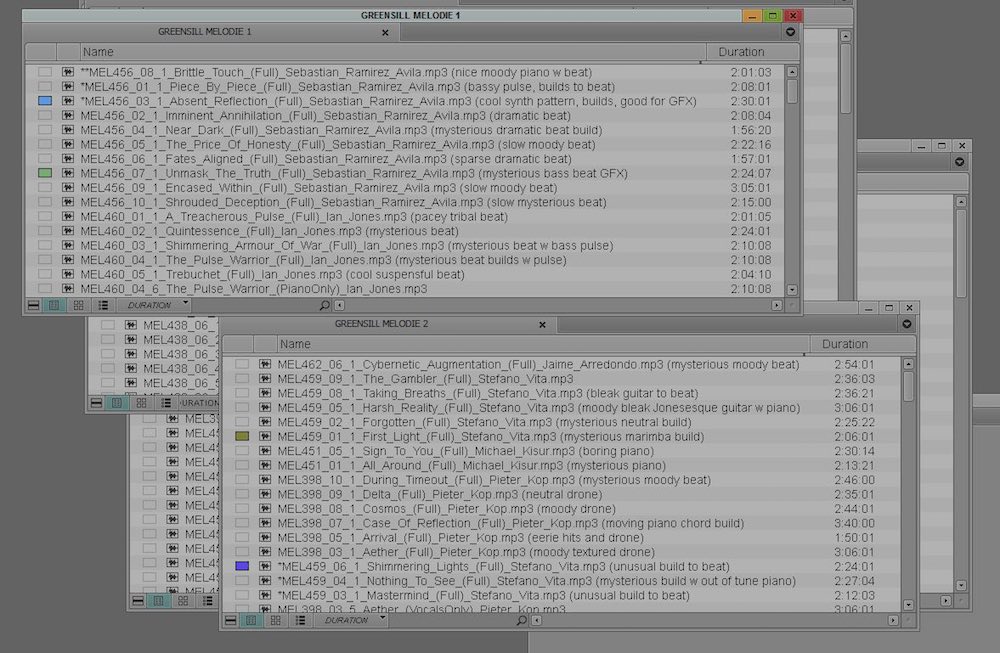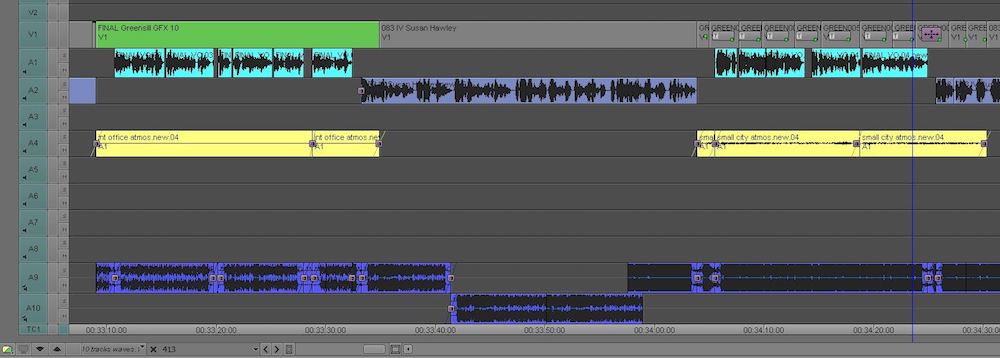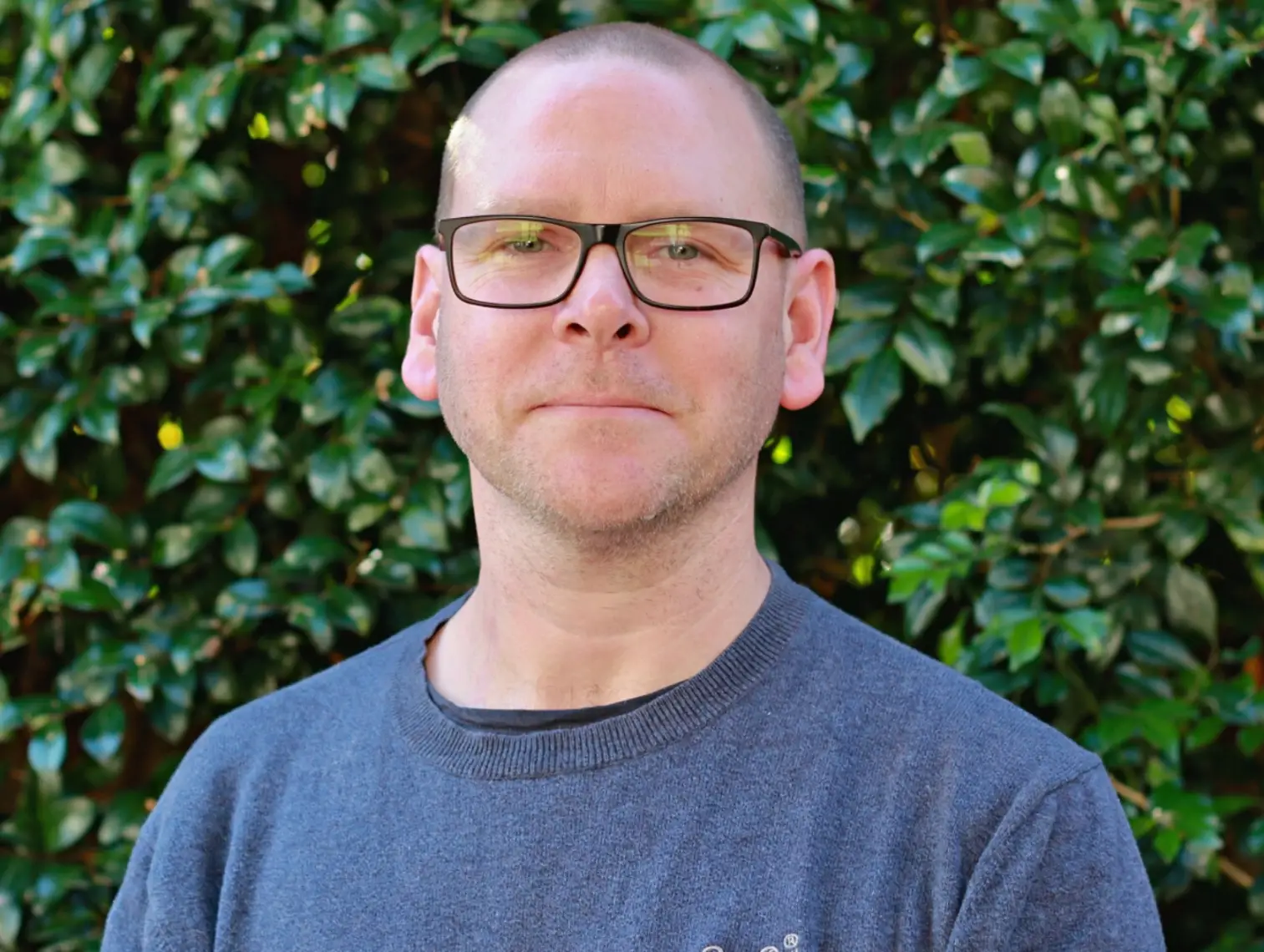
29 Aug Guy Bowden: Editing Music for Television
In the world of current affairs they don’t get much bigger than the ABC’s multi-award winning, game changing, Four Corners. Guy Bowden is one of a small team of editors there and has worked on some of the most high profile stories in the last decade. We asked him to run us through his processes, and explain the critical role music plays in telling the story.
A Glance Into Guy’s Music Editing
Guy: Music plays an incredibly important part in most video editing. I work at the ABC at Four Corners in Current Affairs where we use music a lot given the type of productions we produce. Therefore, I am working with music on a daily basis – editing, driving emotions and striving to make world-class episodes.
When I edit a sequence, music underpins the tone or sometimes even drives it completely, depending on the subject, available vision and the reporters’ narration. If the story subject is pretty dry, say a business story, and the vision is of a building (“guilty buildings” are a staple at 4 Corners), but the reporter narration is explosive, proving corruption or embezzlement, then I would choose a high impact track with a beat that gives the opportunity to edit pictures on any accents, and I would have the track upfront within the mix to grab the viewers’ attention. If I have enough shots of the building, I can create a fast-paced visual sequence with a flourish of pictures before the narration begins, and maybe try and pause narration if a music accent occurs (or loop the music or remove a phrase to make it occur when I want).
Sometimes a sequence is inherently dramatic and needs little help from music, maybe none. If the vision has lots of natural audio, then you need to think that through and make that choice. Think of a police raid, or a riot, a long-awaited family reunion, or a family member who has just died. These scenarios need very little music to enhance the drama. Maybe just a drone buried in the mix, maybe nothing. It’s up to the editors’ discretion.
At Four Corners, the editor makes almost all these decisions alone. There isn’t time for the producers to sit in with us, as everyone is working on their own part of the story at the same time right up until broadcast. And these days, we mostly work from home anyway, so the story team only sees the whole story after a first draft “rough-cut” has been completed.
Of course, music is a subjective medium – some people hate dubstep or a trap beat. So those things are discussed after we have the viewing, sometimes music is changed but mostly not. My job is to get it right from the start. Read the tone of the story before the edit begins by discussing the story with the team and then selecting a lot of different music tracks with varying styles and tempos, often many hundreds of tracks from Melodie and other libraries.
These days with time constraints, our edit schedule is such that our prep time has been reduced, so I rely on the help of music producers at all the libraries to put playlists together for each story I’m cutting. I give them a rundown of the subject and a quick blurb on what types of tracks I think will work well. Is it a social story about families and communities, a big business story, a government scandal (another staple at 4Cs) or a story about the Middle East? Some tracks can cross-pollinate, some can’t.
I also ask for only the most recently released tracks, as I always reimport tracks from stories I’ve cut in the past that have a similar vibe. After the new tracks arrive, I import them and have a quick listen and, if stems are supplied, give each main track a short description.
Once I’m editing, I don’t need to audition each track, I just read my description (cool trap beat with accents and breakdown) and bring on the guilty buildings! I know I always have too much music but I also know that the perfect track is in there somewhere. The last thing I want to do halfway through an edit is to stop and select a whole raft of new tracks.
The days of using commercial music at the ABC is long gone now – we only use production music. We sell many Four Corners episodes worldwide so it’s crucial to have access to high-quality production music tracks created by accredited artists so we can continue to make world-class episodes. I used to love using Trent Reznor’s film scores, Clint Mansell, Anthony Partos, Gustavo Santoalalla, Dave Porter to name a few and I really miss using them, I often think “that Animal Kingdom track would be perfect here”. Melodie has AI powered search tools on their website that I recently used to find a track similar to a specific track from the Girl With The Dragon Tattoo soundtrack. The AI ‘reverse search’ worked better than I expected, I found a track and it worked a treat.
We sell many Four Corners episodes worldwide so it's crucial to have access to high-quality production music tracks created by accredited artists so we can continue to make world-class episodes.
I’ve always enjoyed the physical editing and manipulation of music tracks. I grew up as a musician and have a good sense of rhythm. I love using high impact tracks that ebb and flow and then resolve. I like to cut with my waveforms on. Then I can see those accents, builds and breakdowns as well as hear them. It makes editing music so much quicker, I like to be efficient. As mentioned before, sometimes you want to manipulate an accent into a certain part of your sequence, can you maybe reverse a phrase leading to the accent or add an audio whoosh and hit for extra impact? Is the music sequence short and concise, maybe 10-15 seconds long, or perhaps 2-3 minutes. Maybe you need a long ambient section then a gradual build and crescendo to the sequence climax and resolve, or then decrescendo and gradually fade away into nothing. I love using stems for that purpose. You can really ramp the intensity up and down as needed.
One technique I use sometimes is if I have a great track that suits the tone I want to set but lacks depth and bass tones, I would mix a simple drone track underneath to give it a bit more oomph. I will sometimes simply generate some reference tone to match the key of the track to help with that too and fade it in and out as I want.
Of course, editing a production like 4 Corners requires a great deal of sensitivity. The show deals with so many story types. You must take care when selecting the pictures and sounds you use so you don’t accidentally juxtapose images and contrive something inaccurate. Music is so important in that aspect, it is easy to use music in a sinister, menacing way and certain programs make a point of doing that. I like to think I’m an empathetic, thoughtful person and I take great care not to exaggerate the emotion in specific sequences. I stay mindful of that when I’m cutting a sequence about a family tragedy when I’ve never met them, they are just people on my monitor. I didn’t go and interview them or spend weeks or months researching their plight. I don’t have time to watch the entire interview, I just cut in the grabs that are carefully selected by the reporter and producer. So editing with sensitivity and empathy is crucial. I will always review a sequence multiple times after I’ve “finished” cutting it, make further trims and adjustments and think about how that one sequence fits into the entire story arc. You’re never actually done with editing pictures, sound and music, you just get to a point where you’re happy with it and then you run out of time.
Guy Bowden, Editor at Four Corners, has worked in the film and television industry for over 25 years. He began his career as a Grip working on everything from unpaid student films, small and large TV commercials to Hollywood blockbusters. In 2001 a workplace accident left him unable to continue that kind of physical work on-set, so he retrained focusing on post-production. He has worked at the ABC as part of the editing team at Four Corners for 17 years and has edited over 120 episodes.



